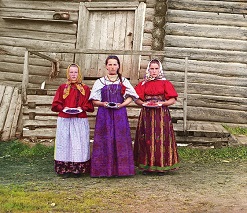 The Final Years of Pre-Soviet Russia, Captured in Glorious Color
The Final Years of Pre-Soviet Russia, Captured in Glorious Color
Under Czar Nicholas II, blue and green got introduced to the palette. In 1909, Nicholas authorized Sergei Mikhailovich Prokudin-Gorskii to document his empire using a new technique called additive color. Over a period of about six years, Prokudin-Gorskii took some 10,000 pictures, systematically chronicling Russia’s rich culture, industry, and architecture. His stunning photos capture the breadth of life in the last days of an empire, its rugged frontiers and rural landscapes, and the signs of its growing industrial might. They were meant to be presented as “optical color projections” to the nation’s school children, to expose them to the dazzling diversity of Russian life they wouldn’t otherwise see. The images offer a rare glimpse of pre-revolutionary Russia, in color so vivid it’s easy to forget they’re a century old.
They operate on the now familiar principle that a wide range of colors can be reproduced by combining monochrome exposures in red, green, and blue. To achieve this, Prokudin-Gorskii used three oblong glass plates to snap black and white slides in quick bursts through colored filters. James Clerk Maxwellin first proposed the technique in the mid 1800s, and it’s still used today in many televisions and computer monitors.





